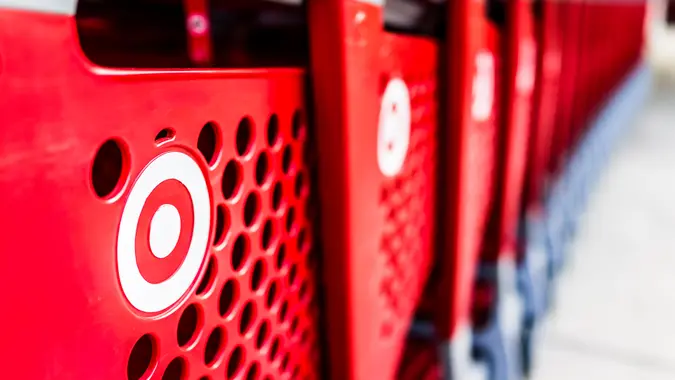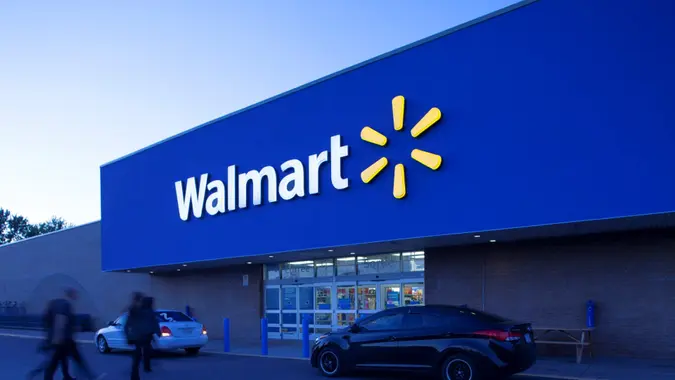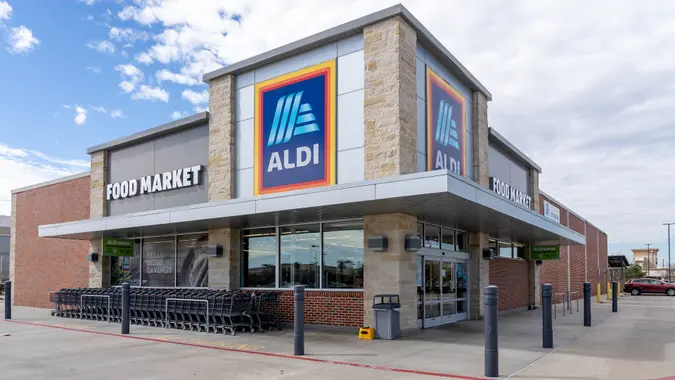7 Subtle Tricks Brands Use To Make You Spend More

Commitment to Our Readers
GOBankingRates' editorial team is committed to bringing you unbiased reviews and information. We use data-driven methodologies to evaluate financial products and services - our reviews and ratings are not influenced by advertisers. You can read more about our editorial guidelines and our products and services review methodology.

20 Years
Helping You Live Richer

Reviewed
by Experts

Trusted by
Millions of Readers
Big brands don’t just sell products. They sell illusions, emotions and urgency — anything to keep money flowing. From psychological nudges to pricing games, some marketing tactics are designed to make spending feel like a smart decision.
Marketing tricks won’t stop, but recognizing these seven tactics may make it easier to avoid unnecessary spending.
Charm Pricing and Deceptive Discounts
Prices ending in .99 or .95 aren’t random. Dropping even just a penny makes the price seem like a significantly lower number, and as reported by NetSuite, research has shown that this can increase sales.
The same goes for discounts that aren’t real. A store might raise the “original” price and then add a markdown that makes it looks like the item has been generously discounted. It gives the illusion of savings without the actual benefit. In fact, according to an October 2024 report from Chain Store Age, class action lawsuits regarding these types of price tactics doubled over the prior year.
Scarcity and ‘Fear of Missing Out’ Tactics
“Only two left in stock.” “Limited-time offer.” “Selling fast.” These messages create a sense of urgency, making shoppers rush to buy before thinking a purchase through. But the reality is that stock levels can be manipulated and fake countdown timers can be used, both as a way to encourage impulse purchases.
If something truly sells out that fast, chances are it’ll be restocked just as quickly.
Decoy Pricing
A $10 coffee seems expensive — that is until a $15 option appears right next to it. Suddenly, that $10 cup looks like a much more reasonable choice. This trick, called decoy pricing, steers shoppers toward what brands want them to buy by making an overpriced item look like a bargain in comparison.
A famous example is The Economist magazine’s old pricing strategy. As The Strategy Story noted, it offered a digital-only subscription for $59 and a print and digital bundle for $125. At first, more customers went for the cheaper digital option. But then came the decoy — $125 for a print-only subscription.
Suddenly, more people were choosing the bundled deal because it looked like the best value, spending far more than they originally intended.
The Illusion of Free
Whether it’s free shipping on orders over $50, loyalty points that promise free rewards or “buy one, get one free” offers, nothing is ever truly free. The cost is typically built into the pricing strategy, encouraging bigger purchases or repeat spending.
That “free” perk often leads to overspending just to hit the threshold.
Guilt-Driven Marketing
Rounding up for charity at checkout. Limited-edition products supporting a cause. Emotional ads designed to tug at heartstrings.
Brands know that guilt influences spending decisions, making shoppers more likely to justify unnecessary purchases in the name of doing something good.
Sensory Triggers in Stores
Retail spaces aren’t designed by accident. Grocery stores might bake fresh bread near the entrance to make shoppers hungry as they enter, for example. Music, lighting and even shelf placement are all engineered to keep shoppers lingering — and spending.
According to Forbes, stores design their layouts to encourage consumers to follow a specific path to encourage more sales. They’ll also strategically place products to encourage more impulse purchases.
The Subscription Trap
A free trial sounds like a great deal, but automatic renewals are the real business model here. Forget to cancel, and the payments keep coming. Brands rely on inertia, knowing that many people won’t take the time to stop a small recurring charge, even if it’s not being used.
In fact, according to a CNET survey, 48% of respondents reported signing up for a free subscription and then forgetting to cancel.
 Written by
Written by  Edited by
Edited by 
























